
Let’s read!

Summer is the perfect time to re-read the great classics… of bridge. The game has always been commented on, carried further, animated by an abundant and inventive literature thanks to which we can dive back into the basics, experience the breathless suspense of legendary games, immerse ourselves in the head of a champion or even get a good laugh. This tradition of books, so specific to bridge, which links generations of players, is already quite a story in itself.
Terence Reese’s record was surpassed a few years ago by David Bird, with 153 books published to date.
Writing to disseminate, to codify or to teach. Ever since the game came into existance, many great champions, teachers and other players have taken up the pen to mark blank pages with their imprint. “In the early days of bridge, television didn’t exist. The only way to know what people had played was to write,” explains Philippe Cronier, connoisseur of bridge literature
This tradition has never ceased. “The game lends itself well to writing. And you can easily read it and follow the descriptions, for the bidding as well as for the play of the cards,” adds the American Larry Cohen, who, in the 1990s, wrote the bestseller The Law of Total Tricks and many books after that. At the start of the 20th century, the advent of modern bridge had already given rise to a large number of works, particularly in the United States. In 1930, Ely Culbertson’s Contract Bridge Blue Book, written to make the rules of contract bridge in the way they were codified by Harold Vanderbilt accessible to all, was a great success in bookstores. In the 1940s and 1950s, Charles Goren’s books helped bring the game to a peak of popularity. His Contract Bridge Complete, published in 1942 and written to disseminate his ideas on the new American bidding standard was also a commercial success.

In France, at the same time, Pierre Bellanger wrote Les impasses au bridge (Finesses in bridge), published in 1936. “In this book, he developed a number of techniques and theories which are very modern and which are still in use. Bellanger is the first avatar of a genre of writers that we often find in England or the United States: the champion writer,” underlines Philippe Cronier. Even if these books are mainly intended for passionate bibliophiles, others are real must-haves for anyone with a keen interest in the game.
Bridge champions, publishing champions

Huge player and talented writer, Terence Reese wrote a copious number of books. For instance, Reese on Play published in 1948 and intended for already experienced players remains unforgotten. But it’s above all the “Over my shoulder” method that his name is associated with. Used for the first time in Play Bridge with Reese (1960), it allows the reader to be immersed in the head and the reflection of this champion. “He brings bridge to life from the inside. And gives a very subjective vision of the game. He describes the table, the opponents and what is happening with the real talent of a storyteller. This introduces a human dimension”, notes Philippe Cronier, “and most of his books are still considered today as must haves of technique.
Another unmissable is Scotsman Hugh Kelsey. “All the French champions had, at some point, a book by Kelsey on their bedside table,” says Philippe Cronier. He didn’t cause bookstore sales like others, but the critical success is undeniable. His first two books, Killing Defense at Bridge and Advanced Play at Bridge, are essential for any bridge library about technique. Kelsey is also at the origin of one of the great classics of bridge literature, Adventures in Card Play. Written with Hungarian player Geza Ottlik and published in 1979, it was a resounding success. “This is a novel about the play of the cards. The two authors confront the reader with technical curiosities and let them discover new ways of playing. Experts consider it an unsurpassable technical sum,” explains Philippe Cronier.

As card play doesn’t evolve much this type of work can still find an audience today, but the situation is different for bidding, where there is much more movement. But are all the old books about bidding obsolete? “Yes”, responds Philippe Cronier categorically. “As far as this part of the game is concerned, there is an obsolescence. When we don’t play like that anymore, we don’t play like that anymore.” But he adds some nuance to his point. “There is also everything to do with judgment. And in this area, there are a few books that should be recommended for younger generations to read. I am thinking in particular of that of Jeff Rubens, The Secrets of Winning bridge (1969) or old books by Pierre Albarran or José le Dentu. They remain interesting to explore today.”
Only obstacle, they are not re-issued. But it is still possible to find old editions on the internet, a gold mine to find these pearls and out-of-print volumes. Closer to us, a few books have left a considerable mark on people’s minds. Published in 1992, in the United States, The Law Of Total Tricks by Larry Cohen sold more than 100,000 copies in the years following the release of its English version. It was subsequently translated into many other languages. At the time, his partner Marty Bergen informed him about this theory that had been developed in the 1950s by the French Jean-René Vernes. “No one really knew about that theory, so I thought I should write about it. I printed a few hundred of them and never imagined it would become a bestseller. It’s a book for an advanced level, I find it hard to understand this success,” the author expresses his surprise. And yet, “There are still several thousand copies sold each year.”
The saga of the law of total tricks:
To write his bestseller The Law of Total Tricks, American Larry Cohen relied on a much more confidential French book by Jean-René Vernes. “I never claimed to have discovered the law of total tricks. So, at the beginning of the book, I was doing justice to Jean-René Vernes for his work. A few years after the publication, I received a letter from Paris. I was afraid he would sue me. In fact, the letter said, “Dear Mr. Cohen, As you know, I wrote about the law of total tricks. I am much older today. My ideas hadn’t really resonated, but since your book came out, the world seems to know this theory. And I’m very happy about that and I thank you for making it popular. I can now die in peace, knowing that the whole world knows the law of total tricks!”
Teaching books, a promising niche

Players who are teachers also write a lot. And some of their books are obligatory passages. And for a good reason, they are the ones who sell the most. “The more you target low-level players, the more players you hit. The market is larger,” explains Canadian Ray Lee, founder and CEO of the specialist publishing house Master Point Press.
It was from a conversation with his mother-in-law, far from being a champion of the game, that the idea for his No. 1 sales book came about. “She regularly plays very bad bridge with friends. One day I asked her what topic she would like to read about. She didn’t even think about it and replied: conventions.”
” That’s how 25 Bridge Conventions You Should Know, by Barbara Seagram and Marc Smith, was born in 1998. A collection of different themes, it still sells very well. “Next year we are going to do a new edition. It is time to revise this book, but we will have to be vigilant and not throw the baby out with the bathwater.”

In the English version alone, it has sold over 250,000 copies and has been translated into many languages. “Beyond 300,000 copies for a bridge book, we can consider it a bestseller,” explains the publisher. How to qualify in this case a book which was sold more than 500,000 times? This is the case of La Majeure cinquième (Five-card Majors) by Michel Lebel. Multiple French champion and World champion, he found a vocation in writing and teaching. “In 1974, Pierre Jaïs asked me to write a book on my system. This system was the one I played in competitions with Paul Chemla. We developed it to become world champions. Pierre suggested that I make it a system for the general public,” recalls the author.
Benefiting from a generalist publisher, Les Éditions du Rocher, it was then sold in all bookshops in France. Later produced in exercise books and other titles, it defined the contours of the new French bidding standard and pushed Michel Lebel towards writing – first with Pierre Jaïs, then alone.
In 1979, confident because of his first experience, he wrote Tout le monde peut jouer au bridge, (Everyone Can Play Bridge), still published today. Another success, the book reached the record number of one million sold copies. In terms of pedagogy, two other names stand out. Those of Robert Berthe and Norbert Lébely.
“I liked writing. I felt able to explain and simplify whereas at the beginning it is very hard for a bridge champion to explain things that are understandable by all.” – Michel Lebel
Their Pas à pas (Step by Step) series has accompanied the learning process of thousands of young bridge players. The first four volumes were released in the 1980s, the last three after 2010. “Robert was definitely ahead of his time when it came to pedagogy for teaching card play. Every month, he would explain a deal in the magazine Le Bridgeur with a lot of clarity by employing the method of “step by step”. When we met and he offered me an opportunity to write books, I accepted straight away. My interest was huge, if only to improve myself,” recalls the former professor of literature Norbert Lébely, who then left teaching to devote himself to bridge.
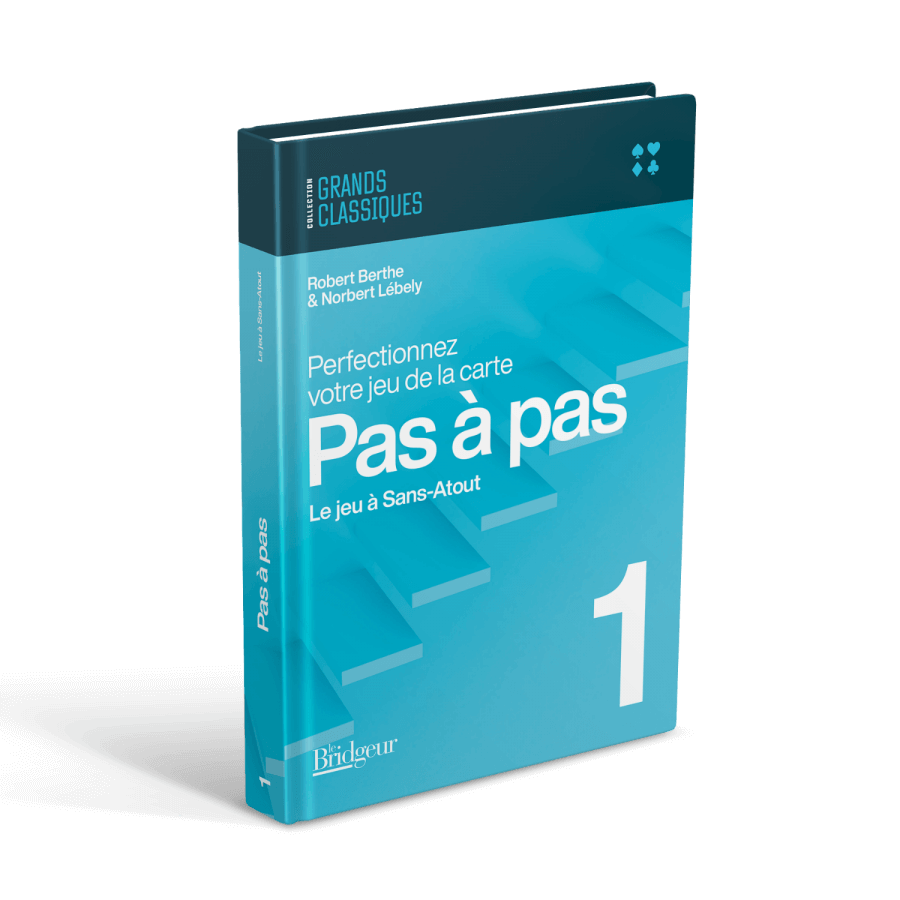
Their innovative pedagogy was the key to their success. “This question-and-answer method was revolutionary at the time and readers loved it, because it lets them participate and progress in the somewhat mysterious field of card play, an area that is quite tricky to explain, to understand and to assimilate”, underlines the author.
Officially. Because according to its author, pirate copies circulate in Indonesia, Bulgaria and elsewhere in the world.
Humor, another way

The game, even if it remains a mind game, offers another ground for writing: humor. The greatest representative of this branch, the Englishman Victor Mollo, has provoked giggles and laughing fits of generations of bridge players. Many players cite him as an example for the book that they were marked by. Originally published in The Bridge World and Bridge Magazine, the stories of the Rueful Rabbit, the Hideous Hog, Oscar the Owl and their cronies are collected in Bridge in the Menagerie, first published in 1965. The author’s stories let you follow a group of tasty characters in the form of animals. Not to be missed!

Following the footsteps of Victor Mollo, the Englishman David Bird placed his characters in the monastery of Saint Titus. “In the 1960s, at the school I attended in London, my classmates were nervous and scared of some teachers. I used this idea with the novices fearing the arrogant Abbot and his reactions to their mixed efforts at the bridge table.” It was with the help of Terence Reese that he started his series. “I was having trouble selling my first volume in the Abbot series. I asked Terence Reese to write the preface and he offered better: to co-write. We ended up producing twenty books together and I learned a lot about writing from him.” Besides his books featuring the Abbot, David Bird has developed other scenarios following a similar model, with Robin Hood and the Convent of Saint Hilda.
In France, it’s the writing style of Pierre Saporta that comes closest to this movement. Even though he doesn’t seek to insist on humor but rather on pedagogy, he brings greater accessibility thanks to his stories. “The books are technical and the fact of presenting with dialogues and characters helps to convey the message better, in a slightly more flexible and less arid way”, explains the author. Bridge magique, bridge logique, published in 2003, still sells. In 2017, he published Jouez un tournoi avec moi (Play a Tournament with Me), in which the reader sits across from the author.
“Every four deals, we meet two different opponents. We are in a tournament and the idea is that the two opponents can be strangers, or characters that I have already met in tournaments.”
Books about the play or bidding, technical or fun books, all that is left for you to do is choose the ones that will accompany you this summer. But beware, according to Ray Lee, “Bridge books are like cookbooks. I like cookbooks for two reasons: First, they don’t go out of style. Then, even someone who already has two shelves full of cookbooks is likely to go and buy one more. People don’t buy only one bridge book.”
The Bridge book on your bedside table
Scroll the green horizontal bar from left to right!
What did you think about this article? What is your next book?
Share your opinion and the name of your next book in the Commentary Section!

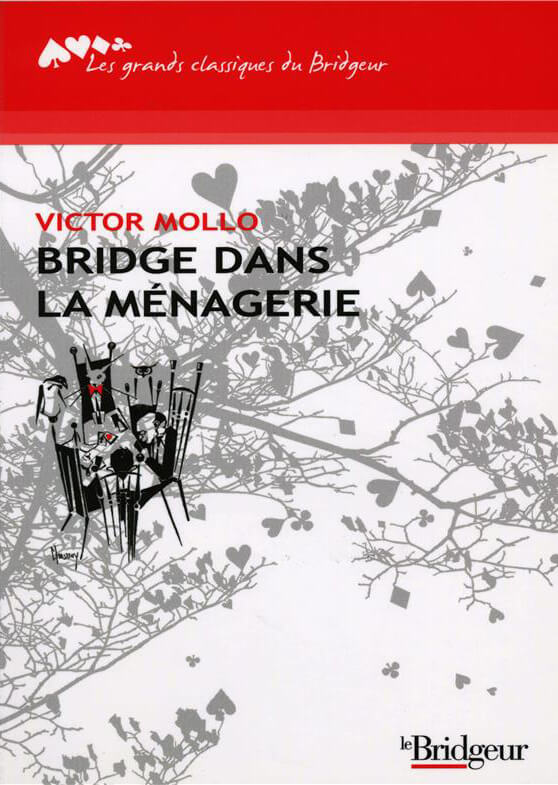
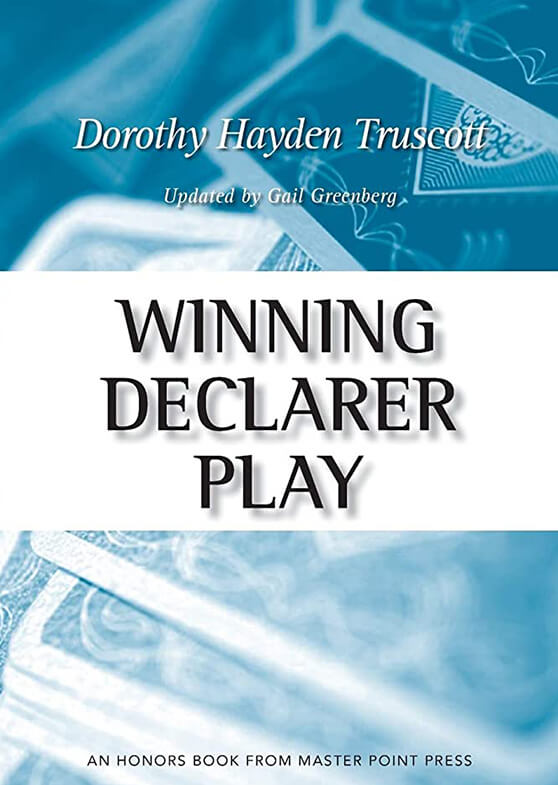
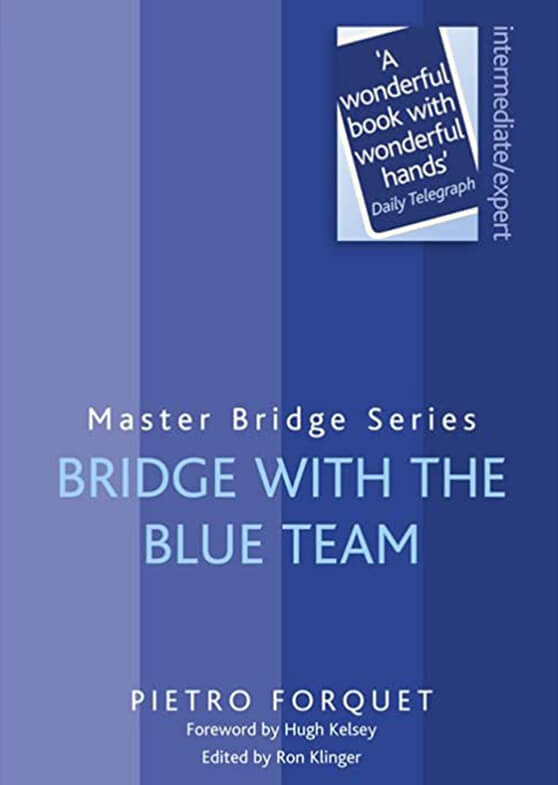
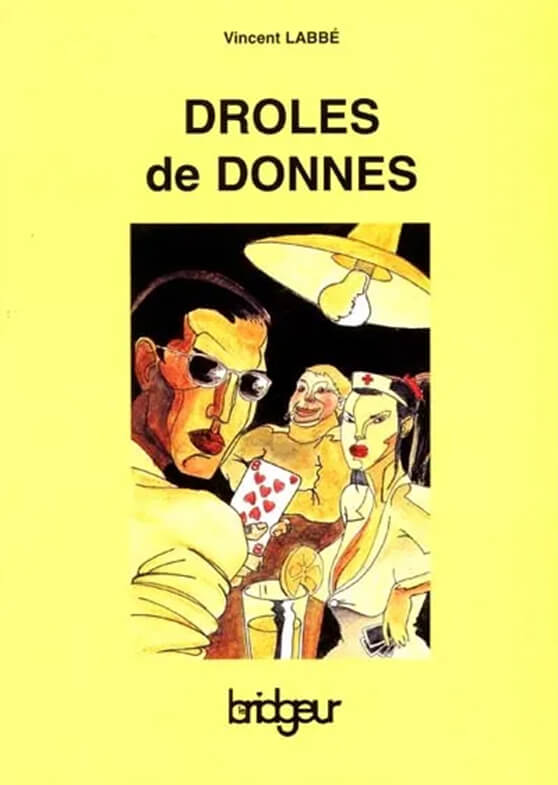
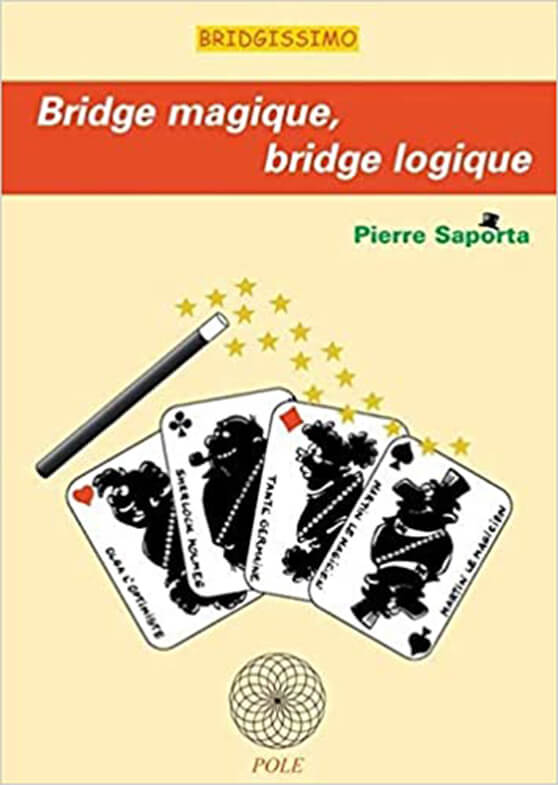



Very readable!
Sturburt
I have heard that Total Bridge by Docteur Bertrand Romanet is quite good. I found a copy online at a used bookstore in Paris and bought it but haven’t read it yet. Does anyone think it is worthwhile? Merci.
One important name is missing Michael Lawrence not only a double world champion and high in the world rankings but his books are must read for any bridge player. How to read the opponent’s cards is a classic also the complete book on overcalls and passed hand bidding. Lawrence style is absolute no arguement with what he says and entertaining He is a brilliant teacher who understands why we get bad results. I put him at the top of the bridge writers list because reading his books has improved my game more than any other writer.
LS, Onze tablets zijn geblokkeerd. Wij kunnen niet meer spelen.
Hoe is dat op te lossen
Mw van der Meer spelend onder de naam ceder
I liked the recommendations made for books to read & conventions to learn. I’m trying to elevate my level of play